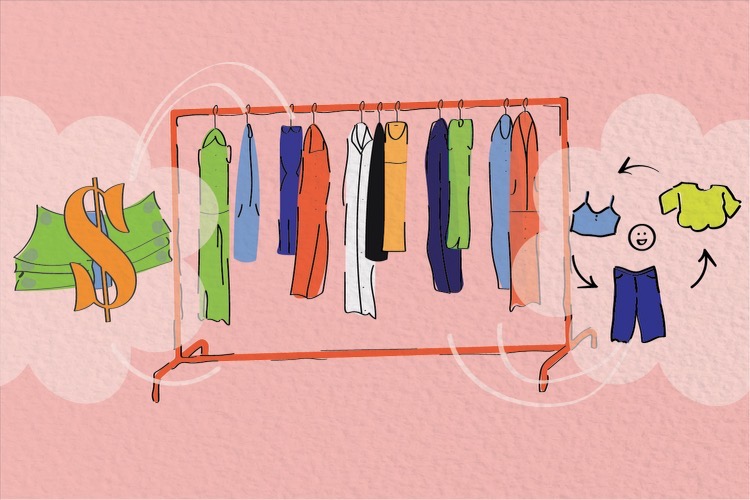Stop reselling thrifted clothes for profit
September 14, 2022
I love thrifting as much as the next UVM student, especially for the thrill of finding the exact piece I was looking for.
However, I feel as though it’s been getting harder and harder to find quality articles of clothing, which I believe is partially due to the number of people buying from thrift shops just to resell their purchases online for a profit.
Thrift shops are meant to be a sustainable and affordable way to buy clothes and have gained an uptick in popularity in recent years.
Secondhand shopping saw a 32% increase in 2021 and is anticipated to see a growth of 127% by 2026, according to ThredUp, a popular online secondhand store.
The practice of secondhand shopping is also very beneficial for the environment. It gives new life to an article of clothing that probably would have ended up in a landfill, according to a July 2021 article from Discover Magazine.
Online secondhand stores such as Depop and Poshmark can be a great asset for people with limited access to brick-and-mortar stores as well as those looking for specific items, but they can also be a vehicle for unethically flipping thrifted purchases.
The issue arises when people take advantage of the low prices in thrift shops to flip pieces for a higher price online for the sake of making a profit.
When these secondhand resellers comb through every rack and bin and take every piece they think will sell, they’re removing access to those quality pieces from the people who rely on thrift shops for their everyday clothing.
The average American household spends around 3.8% of their income on clothing, according to an Oct. 10, 2011 article from How Stuff Works.
In 2020, the yearly median income of an American household was $67,521, according to Credit Karma. The U.S. poverty line is $31,661, according to the U.S. Census Bureau.
This means the average household spends about $2,566 on apparel in a year, while any family falling below the poverty line uses approximately $1,203 to purchase clothing in the same time-frame.
This financial gap demonstrates the importance of secondhand stores and thrift shops, as they provide a place to purchase clothing at a reduced price for families who might not be able to afford traditional retail pricing.
It can be hard to find pieces that are in good condition in any thrift store, but if resellers are wiping out the quality products simply to make their own profit on an online site, the search will get even harder.
Further, this reselling trend can lead to a whole host of other problems that negate the reason thrift stores were developed in the first place.
In response to online thrifting, there has been an increase in the gentrification of secondhand shops themselves, according to an Apr. 26, 2021 Vox article.
Thrifting has historically been practiced by low-income people but has recently been popularized to appeal to a wealthier population who can actually afford new clothing.
Additionally, online thrifting has introduced negative environmental impacts, such as the required shipping to get these clothes to their new owners. Thrift shops are able to avoid these consequences.
Worldwide shipping alone could account for about 10% of greenhouse gas emissions by 2050, according to the European Federation for Transport and Environment website. This environmental strain is unnecessary and reduces the sustainability of secondhand shopping.
I am not against thrifting in general. As I mentioned previously, it can be a great way to dress affordably and with minimal environmental impacts.
However, I do have a problem with the mass removal of clothes from thrift shops bring flipped for higher prices online, limiting access to these items from those who would actually benefit from them.
So next time you’re planning a wardrobe change, skip the online shops, make your way to a local store and thrift the right way.
